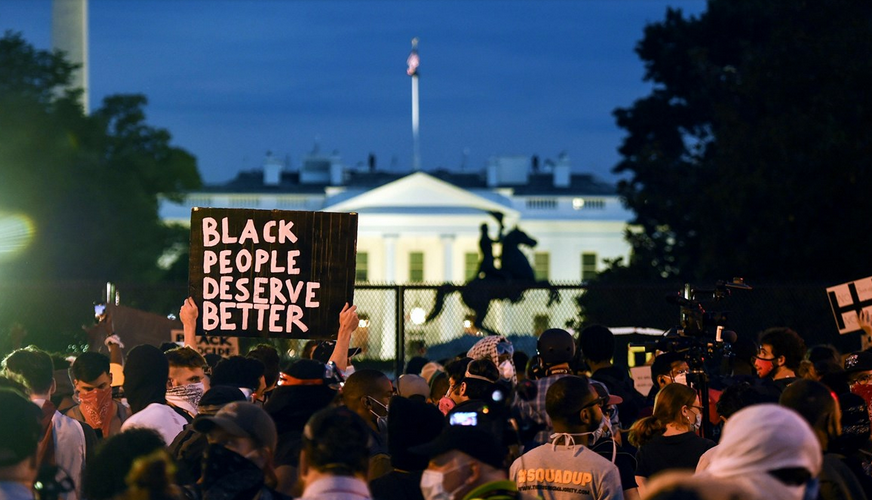‘I Have a Nightmare’: Donald Trump’s Racist Whirlwind
The reality show president is playing ringmaster to the exploitation of Black outrage in a pre-election chaos narrative only he could front.

AFP
Lisa Van Dusen/For The Hill Times
June 3, 2020
As Donald Trump tweeted from his Pennsylvania Avenue lair last Saturday night about setting “vicious dogs” on protesters outraged over George Floyd’s murder, it became clear that the man whose racism was so absurdly dramatized by his 2017 turn as an apologist for the tiki-torch Central Casting Nazis of Charlottesville would be getting the band back together just in time for campaign season.
By Sunday night, it looked like a totalitarian coup, with the despot occupying the White House predictably deflecting from his role in the chaos. “The Lamestream Media is doing everything within their power to foment hatred and anarchy,” Trump tweeted in a torrent of projectile projection. “As long as everybody understands what they are doing, that they are FAKE NEWS and truly bad people with a sick agenda, we can easily work through them to GREATNESS!” By the following day, June 1, he was ordering governors to round up the usual suspects in an unhinged conference call.
In normal times of un-hijacked reality and un-weaponized narratives—say, that bygone era of 1, 500 days ago when a Black man Americans had elected with the first back-to-back majorities in five decades was in the White House—it would seem insane for an American president to incite violence, encourage abuse of power, and propagate racism as an electoral strategy.
But since Trump’s consequence-firewalled presidency was designed, apparently, to make America seem like a basket case and democracy seem terrifying on behalf of his authoritarian cohorts, this pre-election crisis wasn’t so much a matter of if as of “based on which catalyzing flash point?”
That flash point was provided on May 25 when Floyd, 46, was murdered after passing a $20 bill identified as counterfeit in a store in the Powderhorn neighbourhood of Minneapolis.
There is such a lack of nuance and ambiguity, such a vacuum of humanity in the video of the final eight minutes and 46 seconds of George Floyd’s life that it feels more like ghoulish Orwellian propaganda than involuntary incrimination. Why eight minutes and 46 seconds? Evidently, that’s how long it takes for a man to die when your left knee is on his neck, crushing his jugular vein and carotid artery while your right knee is on his back, making your full body weight a lethal weapon. Actually, that’s how long it takes for a man to die with a two-minute 53 second margin of error. Floyd was unresponsive by minute six.
The asymmetry of the power, disproportion of the force, and shamelessness of the racism on display during Floyd’s murder explain the outrage being expressed across America. The exploitation of that outrage—including the apparent deployment of rent-a-rioters to generate violence—for destabilizing political and, apparently, geopolitical purposes, even in an age defined by seemingly infinite new lows, is reprehensible.
According to the U.S. Bureau of Justice Statistics, the crime rate in America has declined precipitously in the past quarter century—by 71 per cent between 1993 and 2018—presumably, at least in part, due to the evidentiary disincentives of DNA identification and ubiquitous CCTV surveillance. Yet, the relationship between Black men (one in every 1,000 of whom can expect to be killed by a police officer—2.5 times higher than white men) and police in America has become so tragically tense that African-American children are instructed in how to avoid being shot to death in routine encounters with people paid to protect them, most of whom are conscientious, courageous public servants.
It’s a terrible irony that, as Americans have become more law-abiding, police forces are becoming more militarized, empowered, and feared. That that irony coincides with unprecedented corruption, racism, and contempt for democracy emanating from the presidency itself isn’t just sad. History tells us it’s ominous.
Lisa Van Dusen is associate editor of Policy Magazine and a columnist for The Hill Times. She was Washington bureau chief for Sun Media, international writer for Peter Jennings at ABC News, and an editor at AP in New York and UPI in Washington.
